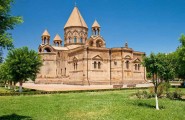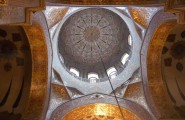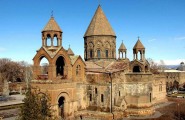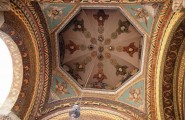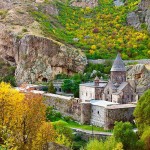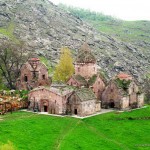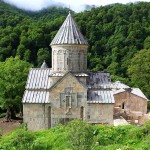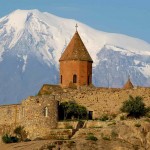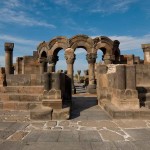
Echmiadzin Cathedral
Comment are off
Echmiadzin, which means the «The Descent of the Only Begotten Son», is an ancient capital of Armenia. According to legend, Jesus Christ descended from heaven and indicated the place for a church to be built. Holy Echmiadzin Cathedral was erected at that site in the 4th century (301-303), at the dawn of the Christian conversion of the country by King Trdat III and Saint Gregory the Illuminator. The Cathedral was built on top of the pagan temple of Vagharshapat, after it was destroyed by King Trdat. Armenia was the first country in the world to adopt Christianity as its state religion. Echmiadzin is the residence of the Supreme Catholicos of all Armenians and the center of the Armenian Apostolic Church. Every seven years, the rite of blessing of holy chrism is held here; thousands of believers come to Echmiadzin as pilgrims from different parts of the world for this ceremony. The existing Echmiadzin Cathedral was rebuilt around 480 AD on the site of the early 4th century cruciform basilica of which barely four bases had survived; these were used to support four pylons of the new structure. The Cathedral’s present dome dates from the 17th century, as does a belfry on the western side (1653-1658). Its 17th-18th century frescoes are the masterpieces of the Hovnatanyan family of artists. The Cathedral’s museum exhibits an unusually large collection of applied and decorative art objects associated with the church; reliquaries, gonfalons, and the like, dating from the 10th-18th centuries. Echmiadzin Cathedral included in the UNESCO World Heritage List.

